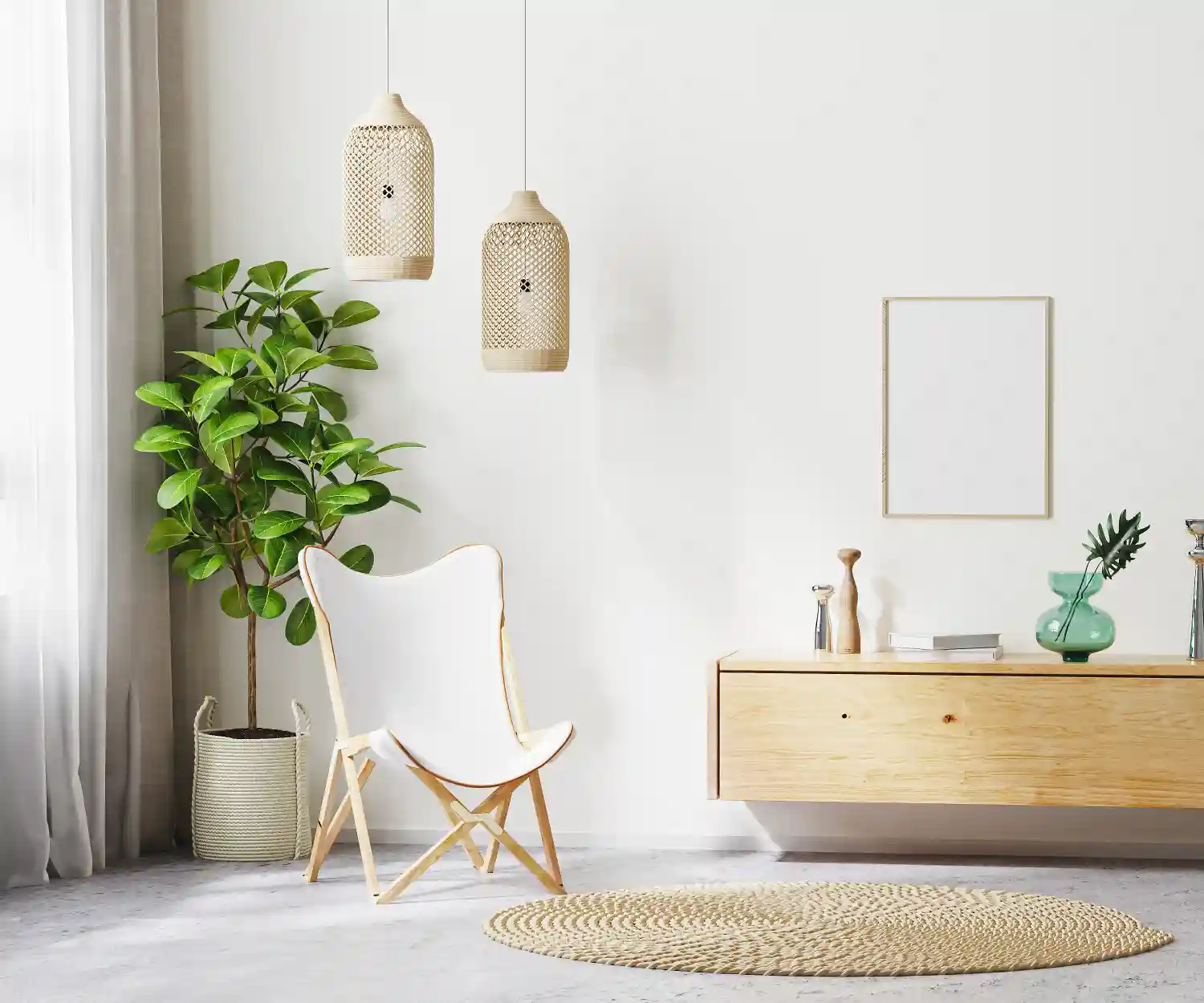
Walking into a home with Scandinavian style usually makes me feel better. It is a design concept that values simplicity, usefulness, and a strong connection to nature. It creates environments that are both attractive and comfortable to live in. I’ve been using these ideas in my own home and for other people for years, and I am confident that Nordic interior design has a distinct appeal and elegance.
Scandinavian design isn’t just a trend; it’s a way of life that values health and usefulness. No matter what time of year it is, it’s about making a space that feels calm, welcoming, and truly in harmony. If you’ve ever admired those bright, uncluttered spaces and wondered how to achieve that look, you’re in the right place. Let’s delve into what defines this beloved aesthetic and how you can bring its calming influence into your own home in 2025 and beyond.
Key Takeaways
- Understand the foundational principles that define the Scandinavian aesthetic, emphasizing functionality, simplicity, and natural elements.
- Discover how to incorporate Hygge into Scandinavian decor, creating a cozy and welcoming atmosphere in any room.
- Learn about the essential furniture, materials, and color palettes that characterize modern Scandinavian interior design.
- Get actionable tips for decorating key areas like your living room and bedroom to achieve an authentic Scandi look.
What exactly is the Scandinavian style?
The Scandinavian aesthetic is more than just a decorating style; it’s a philosophy born from the Nordic climate and culture. Characterized by long, dark winters, the design evolved to maximize light and create warm, inviting spaces indoors. This led to a focus on bright colors, natural materials, and an emphasis on coziness – a concept deeply intertwined with the Danish word “Hygge.”
At its heart, Scandinavian design values utility, craftsmanship, and understated elegance. It eschews excessive ornamentation in favor of clean lines furniture and purposeful pieces. When I first started exploring this style, I was struck by how every element seemed to serve a purpose, yet contributed to an overall sense of calm and beauty. It’s about creating a harmonious living environment that supports a good quality of life.
This approach isn’t just about what you see, but how you feel in a space. It’s about creating a backdrop for everyday life that feels restorative and inspiring. What defines the Scandi aesthetic is this blend of practicality with beauty, creating homes that are both highly functional and deeply comforting.
The Core Principles of Scandinavian Design
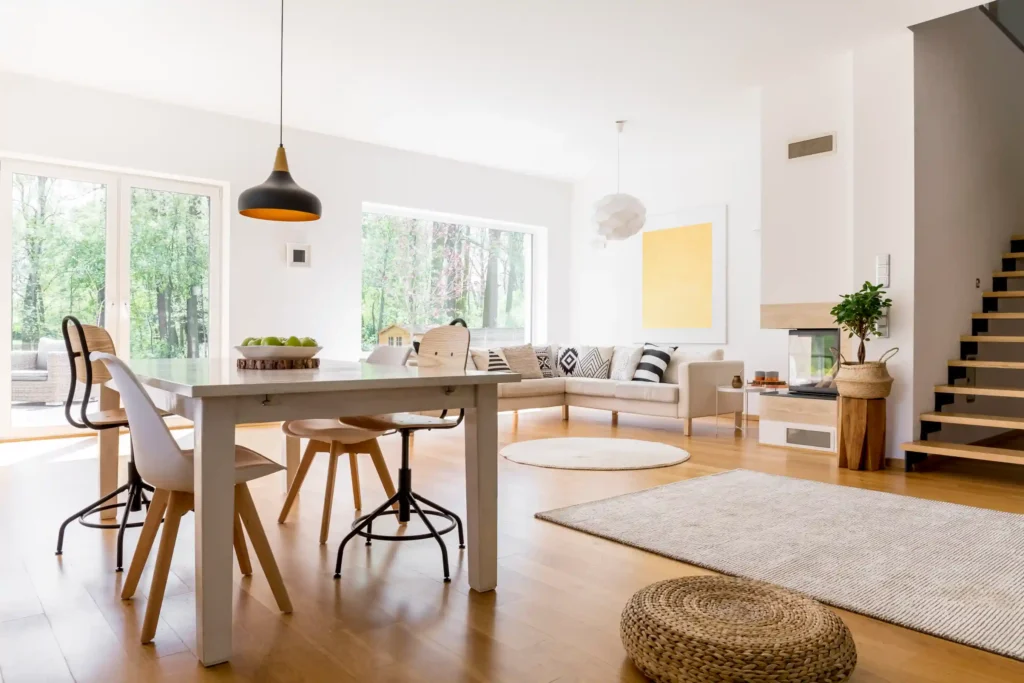
To truly understand and implement Scandinavian style decoration, it helps to grasp its foundational principles. These aren’t rigid rules, but rather guiding ideas that inform every design choice. Embracing these core tenets will help you achieve a truly authentic look, rather than just a superficial imitation.
- Simplicity (Minimalism): While often compared, Scandinavian design isn’t as stark as pure minimalism. It’s about intentional simplicity, removing clutter to highlight essential, beautiful items. This isn’t about deprivation, but about creating space for what truly matters.
- Functionality: Every piece of furniture and decor should serve a purpose. This means choosing well-designed, durable items that are both practical and aesthetically pleasing. Think about how a piece will be used daily.
- Natural Elements: A deep connection to nature is paramount. This translates into using natural wood furniture, wool textiles, ceramic pottery, and abundant indoor plants. These elements bring warmth and life to a space, reflecting the serene Nordic landscape.
- Light Maximization: Given the geographical realities, maximizing natural light is crucial. This influences everything from window treatments (often minimal or non-existent) to color choices and reflective surfaces. It’s about brightening every corner.
- Comfort and Coziness (Hygge): This principle is about creating a warm, comfortable, and inviting atmosphere. It involves soft textures, ambient lighting, and personal touches that make a space feel like a sanctuary.
By focusing on these essential elements of Scandinavian design, you can begin to curate a home that feels both authentic and deeply personal. It’s about quality over quantity, and thoughtful choices over fleeting trends.
Hygge: Practicing Relaxation and Health
You can’t talk about Scandinavian style decoration without diving into Hygge (pronounced “hoo-gah”). It’s a Danish concept that encapsulates coziness, comfort, and contentment, often achieved through simple pleasures. For me, Hygge is the soul of a Scandinavian home; it’s what transforms a beautiful space into a truly comforting sanctuary. How to incorporate Hygge into Scandinavian decor isn’t just about aesthetics, but about fostering a feeling.
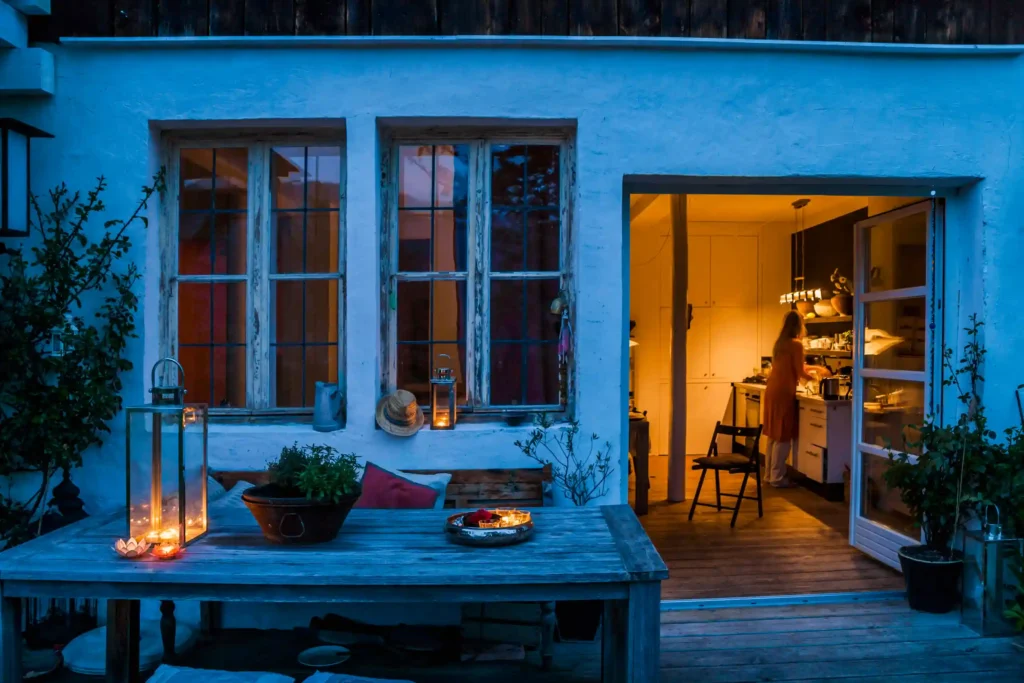
Imagine soft throws draped over a sofa, the warm glow of candlelight, a steaming cup of tea, and good company (or a good book). These are the ingredients of Hygge. In interior design, it translates to creating an environment that encourages relaxation and connection. Think about layering textures, adding sheepskin rugs, choosing comfortable seating, and using warm, ambient lighting instead of harsh overheads. It’s the subtle details that make a huge difference.
My own experience with Hygge involves strategically placed throw blankets, scented candles that evoke nature, and a designated “cozy corner” where I can unwind. It’s about prioritizing moments of peace and contentment, and designing your home to facilitate them. Hygge interior design isn’t just about looking good; it’s about feeling good, creating those coziness elements that invite you to slow down and savor life.
A Calm Palette: Common Colours Used in Nordic Interior Design
The typical colors in Nordic interior decoration play a vital role in achieving that signature bright, airy feel. The predominant palette is one of neutrals, but don’t mistake neutral for boring! This light color palette serves as a serene backdrop, allowing natural light to bounce around and highlight textures and natural materials.
Crisp whites, soft greys, and muted beiges form the foundation of most Scandinavian homes. These colors reflect light beautifully, making rooms feel larger and more open. I’ve found that using varying shades of white and off-white on walls creates subtle depth without overwhelming the space. When you layer these light tones, the result is surprisingly rich and inviting.
While neutrals dominate, pops of color are often introduced strategically. These usually come from natural sources or textiles: muted blues, greens, and soft pinks or terracotta. These accents are often inspired by nature—think of the greens of forests, the blues of lakes, or the soft pinks of a Nordic sunset. The key is subtlety and harmony, ensuring that the colors enhance, rather than distract from, the overall calm. Consider the impact of a single wall painted in a soft sage green, or cushions in a deep, forest blue; these can add visual interest without breaking the tranquil ambiance.
Light and Bright: How to Get the Most Natural Light in Your Scandi Home
Maximizing natural light is arguably one of the most crucial aspects of Scandinavian design. With those long winter nights in Nordic countries, making the most of every ray of daylight became a necessity, and this principle continues to define the style. It’s about creating a bright and airy environment that feels uplifting, regardless of the weather outside.
One of the easiest ways to achieve natural light maximization is by keeping window treatments minimal. Often, windows are left bare, or dressed with sheer, lightweight curtains that filter light rather than block it. Heavy drapes are usually avoided. When I first moved into a new space, taking down thick curtains and opting for simple, white sheers instantly transformed the feel of the room, making it feel significantly larger and more open.
Beyond windows, light-colored walls and flooring also play a significant role in reflecting light throughout the room. Mirrors are another excellent tool for bouncing light, especially when placed opposite a window. Strategically placed indoor plants can also help draw the eye towards light sources, integrating biophilic elements into the design. Even the choice of furniture, particularly light wood furniture, contributes to the overall brightness and openness of a Scandinavian-inspired space.
Functional Beauty: Furniture and Materials in Scandinavian Style
When it comes to furniture and materials, Scandinavian design adheres strictly to the principle of “functional beauty.” What materials are commonly used in Scandi homes? The answer almost always points to natural, durable, and sustainably sourced options. This commitment to quality and longevity is a hallmark of the style.

Light wood furniture, particularly birch, ash, and pine, is ubiquitous. These woods not only contribute to the light color palette but also bring warmth and an organic texture to the space. Look for pieces with clean lines furniture – simple, elegant forms that prioritize utility without sacrificing aesthetics. Think iconic mid-century modern pieces, which often share this minimalist design philosophy. Open shelving is also common, allowing for both storage and display of curated items, often ceramic pottery or indoor plants.
Beyond wood, textiles like wool, cotton, and linen are essential. Wool textiles, in particular, add texture and warmth, perfect for those Hygge-filled evenings. Sheepskin rugs are another popular choice, adding a luxurious softness underfoot or draped over a chair. For hard surfaces, ceramic tiles or light-colored natural stone are often chosen, maintaining the bright and clean aesthetic. These sustainable materials not only look good but also stand the test of time, embodying the Scandinavian value of thoughtful consumption.
Here’s a look at some common materials and their applications in Scandi homes:
| Material | Typical Use | Benefits in Scandinavian Design |
|---|---|---|
| Light Wood (Birch, Ash, Pine) | Furniture (tables, chairs, shelving), flooring, wall panels | Adds warmth, natural texture, durability; reflects light; often sustainably sourced. |
| Wool | Rugs, throws, upholstery, pillows | Provides warmth, softness, natural insulation; diverse Scandinavian textile patterns. |
| Cotton/Linen | Curtains, bedding, upholstery, towels | Breathable, natural fibers; adds a relaxed, comfortable feel; easy to maintain. |
| Ceramic/Pottery | Vases, dinnerware, decorative objects, planters | Hand-crafted feel, natural textures, adds artisanal touch; often in neutral tones. |
| Leather | Furniture upholstery (sparsely), accents | Adds a touch of sophistication and durability; usually light tan or black. |
| Glass | Vases, lighting fixtures, tabletops | Enhances light, adds reflective qualities, maintains an airy feel. |
Bringing Nature Indoors: Biophilic Elements and Indoor Plants
The Scandinavian love for nature is deeply ingrained in its design philosophy. With vast landscapes and a culture that values the outdoors, it’s only natural that biophilic elements find their way into every Scandi home. This isn’t just about aesthetics; studies show that connecting with nature indoors can improve mood and reduce stress.

Indoor plants are practically a non-negotiable in Scandinavian decor. They introduce vibrant green hues, purify the air, and add a living, organic touch to minimalist spaces. My home is filled with various plants – from large fiddle leaf figs that anchor a corner to smaller succulents on open shelving. They break up the neutral color palette beautifully and provide an immediate sense of freshness.
Beyond plants, consider other ways to incorporate biophilic elements. Natural wood furniture, as mentioned, is key. Think about using stone or ceramic accents, and even displaying found objects from nature, like interesting branches or smooth river stones. Artwork often features landscapes or abstract interpretations of natural forms. It’s about creating a serene environment that reminds you of the tranquility of the natural world, even when you’re indoors. This deep connection to natural elements and sustainable materials truly defines the Scandi aesthetic.
Tips for Decorating a Scandinavian Living Room
The living room is often the heart of the home, and applying Scandinavian design principles here can create a space that’s both stylish and incredibly inviting. If you’re wondering how to achieve a Scandinavian look in your living room, focus on comfort, light, and natural textures.
Start with your main seating: a comfortable sofa in a neutral color like grey, beige, or white. Layer it with wool textiles – think soft throws and textured pillows in complementary tones. Add a sheepskin rug for an extra layer of coziness. For coffee tables and side tables, opt for light wood furniture with clean lines. I often recommend round tables to soften the look and improve flow in a room.
Lighting is crucial. Instead of a single overhead fixture, use a combination of floor lamps, table lamps, and perhaps even candles to create soft, ambient light. Ensure natural light maximization by keeping windows minimally dressed. Incorporate indoor plants to bring life and color. Finally, curate your decor. Choose a few meaningful pieces of ceramic pottery, art, or books for your open shelving, ensuring the space remains uncluttered and functional design remains a priority.
Creating a Bright and Airy Scandinavian Bedroom
Your bedroom should be a sanctuary, and Scandinavian design excels at creating tranquil, restorative spaces. To create a bright and airy Scandinavian bedroom, the focus should be on simplicity, comfort, and a serene atmosphere.
Begin with a simple, low-profile bed frame made of light wood. Keep bedding natural: white or light grey linen or cotton duvets and sheets are perfect. Layer with a soft, textured throw blanket (perhaps a wool textile) and minimal pillows for that authentic coziness. Avoid heavy curtains; opt for sheer panels or simple blinds to let in as much natural light as possible in the mornings.
Keep nightstands clear, perhaps with just a small lamp and a single indoor plant. A minimalist decor approach here is key to promoting calm. Storage should be discreet; built-in wardrobes or simple dressers with clean lines work well. Consider a sheepskin rug next to the bed for a soft landing, and maybe a comfortable reading chair if space permits. The goal is to strip away distractions and create a peaceful haven.
Examples of Scandinavian Kitchen Designs
Scandinavian kitchen designs are renowned for their efficiency, brightness, and clean aesthetic. They perfectly embody functional design, making the kitchen a joy to cook and gather in. When I envision a Scandi kitchen, I see a space that’s both practical for busy family life and beautiful enough for entertaining.
White or light grey cabinetry is standard, often with sleek, handleless doors or simple leather pulls. This forms the foundation of the light color palette. Countertops are typically light wood, concrete, or light-colored natural stone. Open shelving is common, used for displaying attractive ceramic pottery, cookbooks, or a few well-chosen spices. This keeps essential items accessible while maintaining an airy feel.
Lighting is often a mix of recessed fixtures for general illumination and stylish pendant lights over an island or dining area. Natural wood furniture, like a simple dining table and chairs, completes the look. Integrate indoor plants for a touch of green, and keep clutter to a minimum. The aim is to create a highly organized, bright, and inviting space where cooking feels less like a chore and more like a creative endeavor.
Is Scandinavian Design Suitable for Small Apartments?
Absolutely! Is Scandinavian design suitable for small apartments? In fact, it’s one of the best choices for compact living spaces. The core principles of minimalism, functionality, and light maximization are perfectly suited to making a small apartment feel larger, brighter, and more organized.
The emphasis on a neutral color palette and maximizing natural light makes small rooms feel more expansive and less claustrophobic. Light wood furniture and clean lines furniture take up less visual space than heavy, ornate pieces. Functional design often includes clever storage solutions, built-in units, and multi-purpose furniture, which are invaluable in smaller homes. For instance, a dining table that doubles as a workspace or storage benches can be incredibly effective.
By keeping clutter to a minimum and focusing on quality over quantity, Scandinavian style helps prevent small spaces from feeling overwhelmed. My personal experience in a smaller urban apartment confirmed this; adopting a minimalist decor approach not only made the space feel larger but also brought a sense of calm and order that was previously missing. It’s about thoughtful curation, ensuring every item serves a purpose and contributes to the overall aesthetic.
Where to Find Affordable Scandinavian Style Furniture
Achieving the Scandinavian look doesn’t have to break the bank. While iconic pieces can be pricey, there are many ways to find affordable Scandinavian style furniture and decor that still embody the aesthetic’s core principles. It’s all about smart shopping and being a little resourceful.
Major retailers like IKEA are, of course, a go-to for many. Their entire philosophy is built around accessible, functional design, making them a natural fit for minimalist decor and light wood furniture. However, don’t stop there. Look at other online retailers specializing in modern or minimalist home goods, often offering good quality at reasonable prices. Many European design houses have made their styles more accessible globally.
Vintage and second-hand stores can be treasure troves for authentic mid-century modern pieces, which often align perfectly with Scandinavian design. With a little sanding or fresh paint, an old wooden dresser can be transformed. Don’t underestimate local craft markets for unique ceramic pottery and textile pieces. Finally, DIY projects can add personal touches; think about repurposing old crates for open shelving or creating your own minimalist artwork. The key is to look for clean lines, natural materials, and an emphasis on function.
Modern Scandinavian Interior Design Ideas for 2025
While the core principles of Scandinavian design remain timeless, modern Scandinavian interior design ideas for 2025 often incorporate subtle updates and contemporary interpretations. It’s about evolving the aesthetic while staying true to its roots.
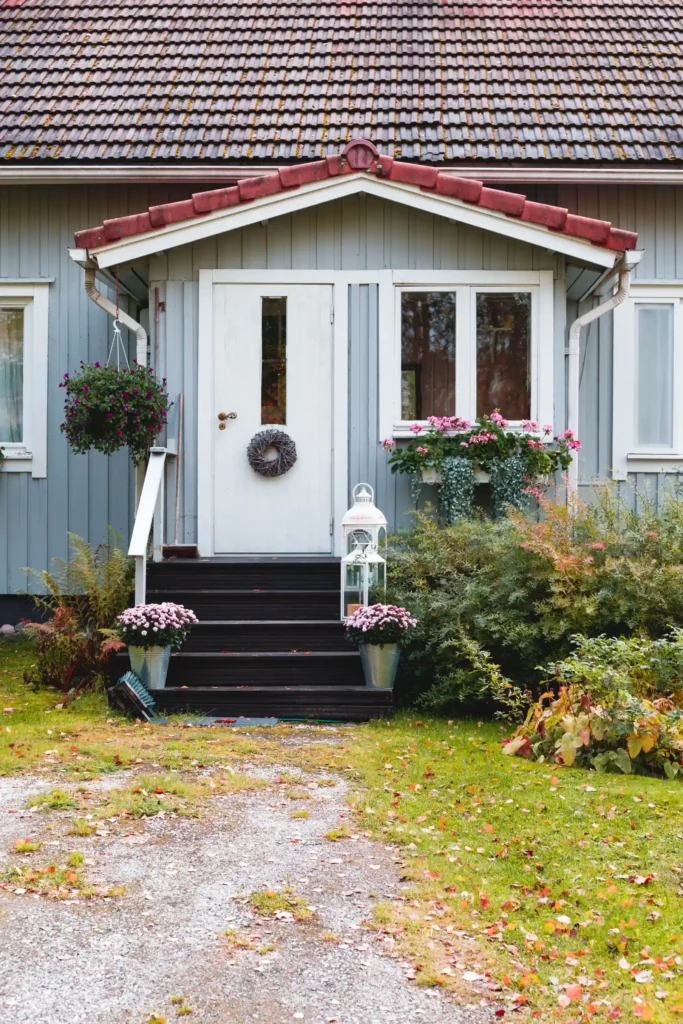
Expect to see a continued emphasis on sustainable materials and ethical sourcing. Biophilic elements will become even more pronounced, with larger indoor plants, vertical gardens, and even more natural textures incorporated throughout. While the neutral color palette will endure, expect slightly richer, deeper accent colors inspired by nature – perhaps a deep forest green, a muted terracotta, or even a soft, charcoal grey for an accent wall. Scandinavian textile patterns might also see a resurgence of subtle, geometric prints.
Technology will also be seamlessly integrated, but in a discreet, functional way that doesn’t disrupt the minimalist decor. Think smart home devices that blend into the background. There’s also a trend towards “soft minimalism,” where the clean lines are softened with more organic shapes, curved furniture, and an even greater focus on Hygge and coziness elements. It’s about creating spaces that are not just beautiful, but deeply comforting and responsive to individual well-being.
Benefits of Choosing a Scandinavian Decorating Style
Choosing a Scandinavian decorating style offers a multitude of benefits that extend beyond just aesthetics. It’s a design choice that profoundly impacts daily living, contributing to a sense of calm, order, and overall well-being. Having lived with this style for years, I can attest to its transformative power.
One of the primary benefits is the creation of a calm and serene environment. The minimalist decor and neutral color palette reduce visual clutter, allowing your mind to relax. This is especially beneficial in our often-overstimulating modern world. The emphasis on natural light maximization also contributes to a brighter, more uplifting home, which can positively affect mood and energy levels.
Furthermore, Scandinavian design promotes functionality and durability. By investing in quality, natural wood furniture and well-made textiles, you create a home that is built to last, reducing the need for constant replacements. This aligns with a more sustainable and mindful approach to consumption. The inherent coziness elements (Hygge) also ensure that your home isn’t just a showroom, but a comfortable, inviting space where you genuinely want to spend time. It’s about creating a home that supports a balanced, joyful life.
Frequently Asked Questions
Here are some common questions people ask about Scandinavian style decoration:
What are the essential elements of Scandinavian design?
The essential elements include a focus on simplicity, functionality, natural materials (like light wood and wool textiles), a neutral color palette, maximizing natural light, and incorporating coziness (Hygge) with indoor plants and soft textures. Clean lines and minimalist decor are also key.
How to achieve a Scandinavian look in your home?
Start by decluttering and painting walls a light, neutral color. Invest in light wood furniture with clean lines. Maximize natural light by using sheer curtains or leaving windows bare. Layer with natural textiles like wool and cotton, and add indoor plants for a touch of nature. Focus on functional design and personal touches that evoke comfort.
What colors are typical in Nordic interior decoration?
A neutral color palette dominates, with crisp whites, soft greys, and muted beiges forming the base. Accent colors are often subdued and nature-inspired, such as muted blues, greens, soft pinks, or terracotta. The goal is to create a bright and airy feel.
Difference between Scandinavian and minimalist decor?
While often similar, Scandinavian design is a warmer, more approachable form of minimalism. It shares the clean lines and lack of clutter but places a stronger emphasis on Hygge (coziness), natural materials, and biophilic elements, making it feel less stark and more inviting than pure minimalist decor.
Is Scandinavian design suitable for small apartments?
Yes, absolutely. Its principles of light maximization, minimalist decor, functional design, and uncluttered spaces are perfect for making small apartments feel larger, brighter, and more organized. It emphasizes smart storage and multi-purpose furniture, which are ideal for compact living.
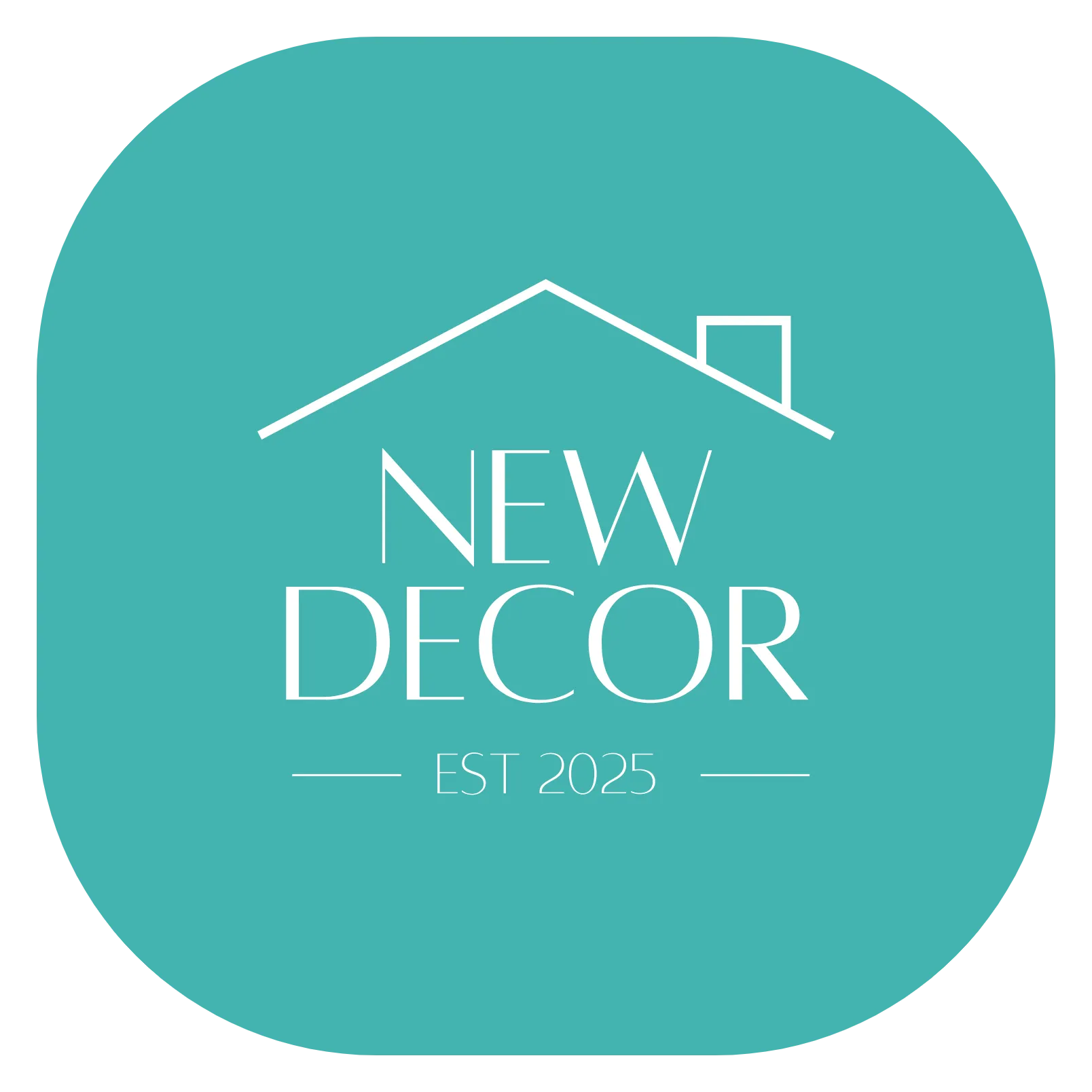
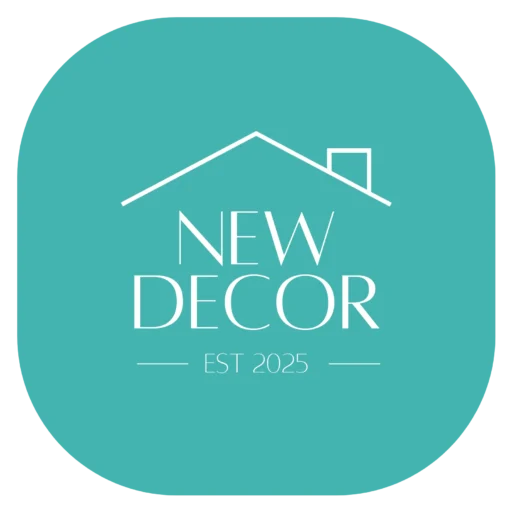



Leave a Reply